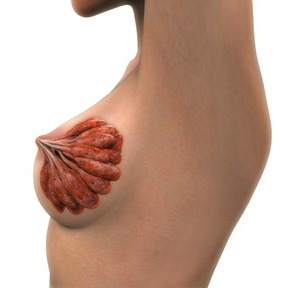Sore Nipples Really Hurt
Sore nipples can really hurt. In fact severe nipple soreness is one of the causes of premature weaning. Nipple pain and discomfort should be treated with care and not ignored.

Some nipple pain and discomfort during the first week of breastfeeding are normal. Milk supply is just getting established. You and your baby are still in search of the best positioning and latch-on may not be perfect.
Incorrect positioning and latch-on are among the main causes of nipple soreness. At the onset of breastfeeding, soreness is normal. Prolonged pain, discomfort and cracked nipples are not.
Getting Ready
- During the last two weeks of pregnancy you can begin preparing
breasts for breastfeeding by gently massaging your nipples with a piece
of cloth. It may not be necessary. But if you know your nipple skin is
extremely gentle and sensitive, this may help get your breasts ready
for baby sucking.
- During the first week of breastfeeding try various nursing
positions. Most babies have their favorites, most moms have their most comfortable ones. You just need to discover them. Click here to learn about correct positioning.
- Latch-on is important. Make sure your baby’s mouth covers as
much of your nipple areola as possible and that it doesn’t press
directly on the nipple itself but the entire areola. Click here to read about latching on.
- Also, never pull the nipple out of your baby’s mouth. Even with no teeth to bite, the suction is so strong that pulling the nipple out can cause it to crack.
Important: If you need to interrupt the feeding session and release the latch-on, carefully stick your pinky into the corner of your baby’s mouth and slightly pull away from the nipple.
How To Relieve Nipple Soreness
- Before feeding try expressing some milk with your hand out of the breast with a sore nipple. It triggers let-down and the baby won’t need to suck so hard. Don’t let your baby get extremely hungry. The hungrier the baby, the more aggressive the sucking.
- Soak a towel in warm water and apply to breasts before nursing. Or take a warm shower. This stimulates milk release and makes it readily available for the baby.
- Avoid cleaning your breasts with soap before every feeding. Soap dries skin. Simply use water.
- Offer the pain-free breast first. So the baby won’t be too hungry and won’t suck as hard when you switch to sore breast.
- Keep your breasts clean by wiping them with a soft sterile cloth after each feeding. Milk remaining on the nipple after feeding irritates nipple skin. However, if there is a crack on the nipple, it is best to express some milk after the feeding and let it dry. It will provide antibacterial coating until the nipple heals.
- Don’t let your baby play with your sore nipple after nursing. Let your breasts rest before next feeding.
- If not too painful, gently massage your nipples after each feeding to improve blood circulation. If your breasts don’t leak, try sleeping naked or in loose clothes to let the nipple skin breathe.
- No need to use antiseptic or alcohol-based ointment to prevent infection. They make dry skin even drier. Milk itself is the best antiseptic.
- Clothes coming in contact with sore nipples should be clean and changed every day. Cotton is best for breast.
- In humid climates treat your nipples with sun, dryness and heat (warm showers).
- Dress warmly in cold weather. Especially in a dry climate. If the skin of your hands cracks from cold, so will your nipples.
- In a dry climate use purified hypoallergenic lanolin.
Lansinoh was the lanolin of my choice. It wasn't even necessary to wash
it off before feeding. However, I did. Dry nipple skin can also be softened
with chamomile- or calendula-based creams, like Natural Nipple Butter from Earth Mama Angel Baby.
Natural Nipple Butter
Natural Nipple Butter by Earth Mama Angel Baby is a natural, toxin-free nipple cream. It helps heal cracked and dry nipple skin. It doesn't contain lanolin, so it is ideal for moms with wool allergy. It contains organic olive oil, cocoa and mango butters and organic Calendula. Safe to use on cracked skin, not sticky and doesn't need to be washed off before nursing. You'll love it!
Click
image below for more information, pricing and ordering directly from
Earth Mama Angel Baby:

Cracked Nipples
Prolonged and untreated nipple soreness can lead to cracks. Cracked nipples cause a lot of pain and may lead to infection in the duct, abscess and mastitis. Treat your nipples with care.
If your nipples crack, stay away from wearing plastic breast shields or nursing pads. They lock in moisture and may cause infection. Expose your nipples to air and sun as much as you can.
The best nursing position for cracked nipples is a side hold, also known as football hold, when you sit up and your baby lies by your side. This prevents your cracked nipples from being pulled during nursing.
If your cracked nipples cause so much pain or bleeding that it makes it impossible to nurse, try your best to express milk by hand or pump. I know it hurts, but it helps prevent mastitis.
Talk to your doctor or lactation consultant about your nipple pain and cracked nipples. Let them examine your breasts to rule out yeast or bacterial infection.
There are many ways to show your love and devotion to your kids and to win their trust. Breastfeeding is the most natural one.
Yours,
Viktoriya
Home › Breastfeeding Problems › Sore Nipples










